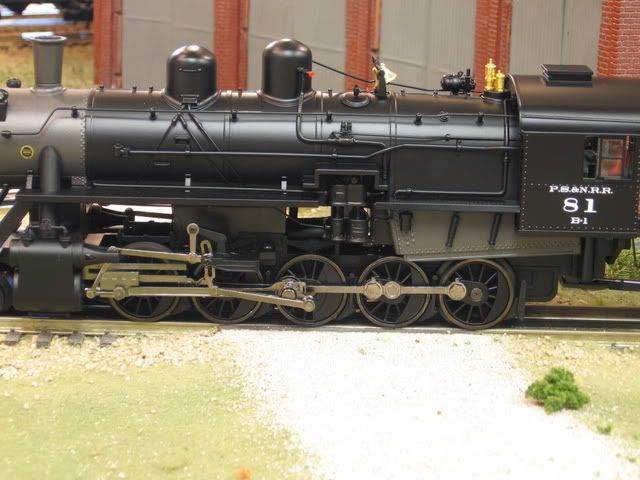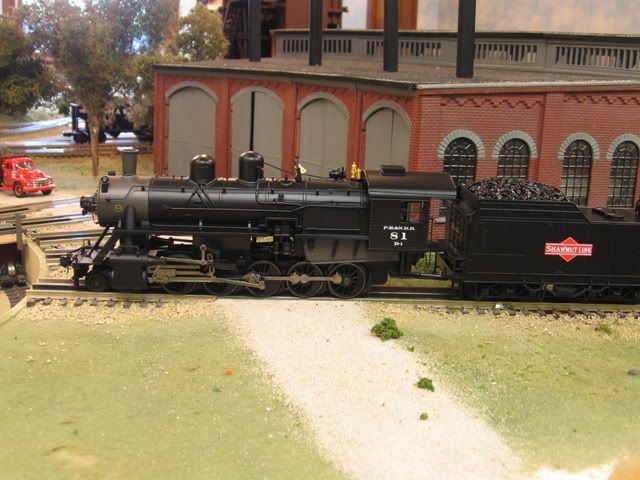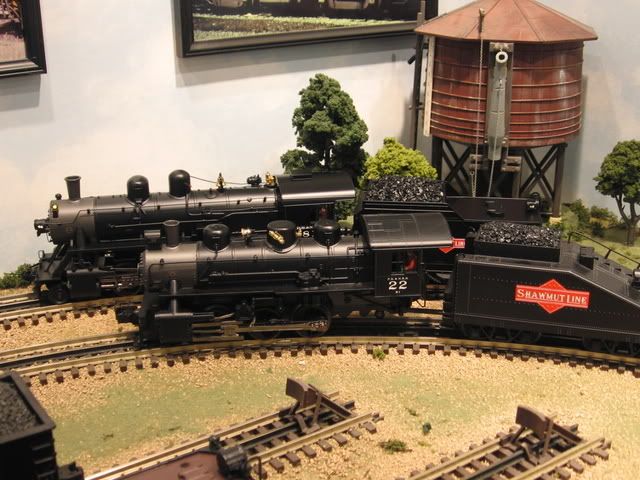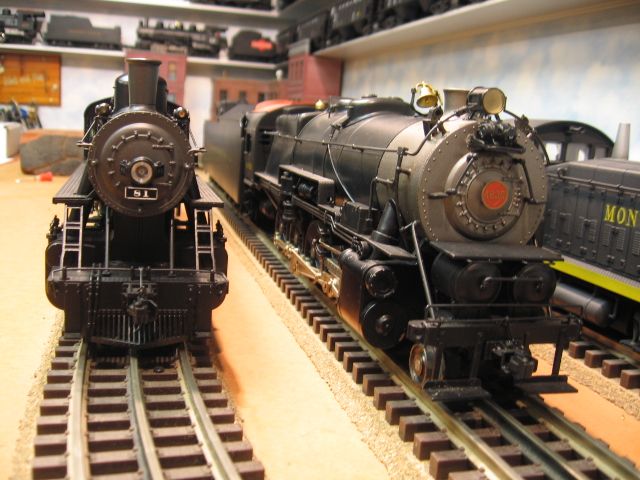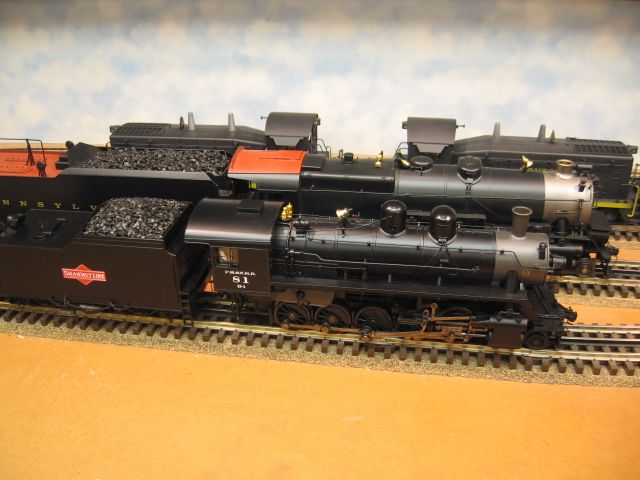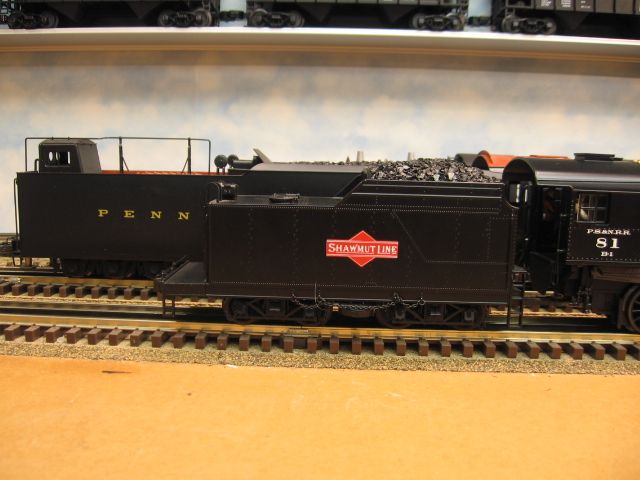MTH:
SEABOARD AIR LINE 544:
The domes don't seem to quite match in shape and the cab windows are different, but the rest of the engine/tender looks good.
Not sure what that larger thing is just above the drivers on 544 (looks like an air reservoir), if MTH had put the gear box over the #3 driver set it would have matched up well.
For those that have one, how do you like it? I see the 3 middle drivers are blind, what's the nominal curve these will take?
This is one engine I would like to get, but at $1k and then gutting the thing to install PBRC I just can't seem to pull the trigger ![]()













